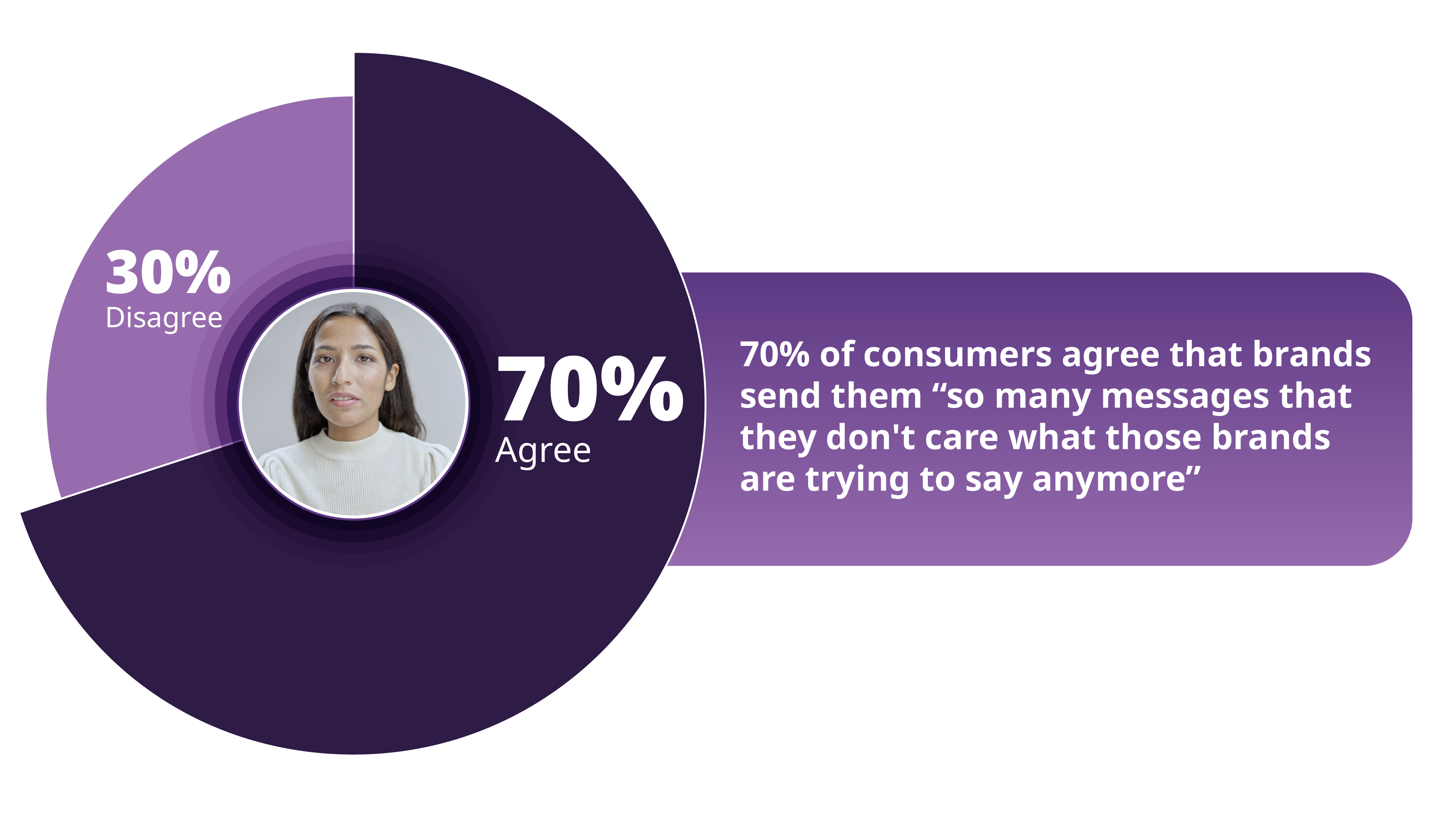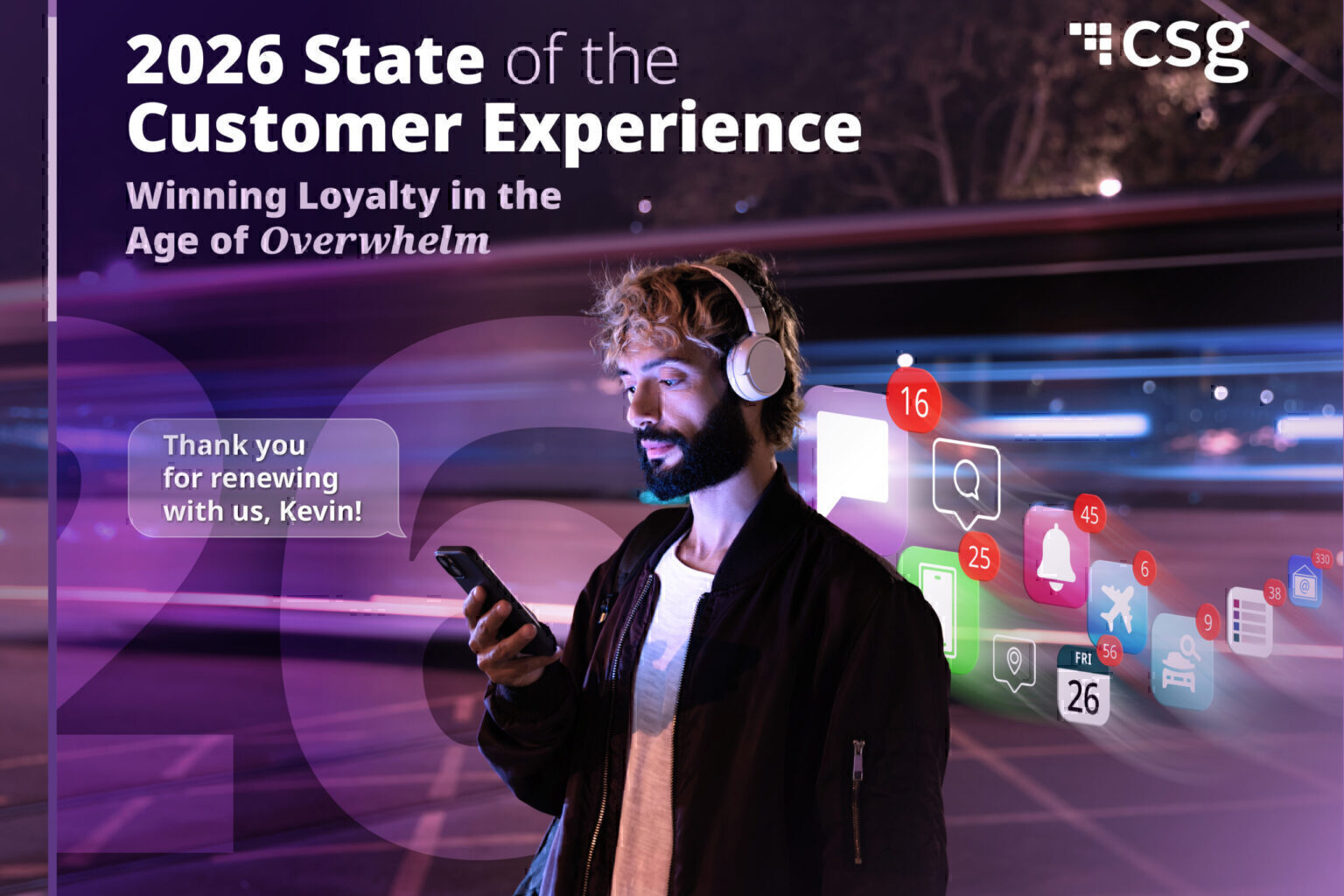If your customers are drowning in messages, they’re not listening to you. And if they’re not listening, they’re not acting. If they’re not acting, they’re not making payments, scheduling appointments, completing purchases, or fulfilling any other basic steps that connect them to your brand.
The fact is, customers are struggling with today’s digital saturation. It’s a revenue leak most organizations still underestimate. And it indicates obstacles that reach beyond customer communications, and into the way businesses approach customer experiences in the year ahead.
How Overwhelm Will Shape Customer Experience Strategy in 2026
As we look ahead to the customer experience (CX) trends of 2026, one theme stands out above all: overwhelm. It’s not just a feeling—it’s a measurable business risk, shaping how customers interact, how teams operate and how brands compete. We explain the risk of overwhelm and analyze its influence on CX trends in the 2026 State of the Customer Experience Report, which includes new consumer research.
CSG commissioned Wakefield Research to survey digital consumers across North America, Latin America, and EMEA for the 2026 State of the Customer Experience Report. Their responses offer an unfiltered look at the realities of customer overwhelm—and what businesses must confront to earn loyalty today and tomorrow.
First, let’s look at how overwhelm is affecting customer interactions based on the survey. Here’s a sample of what the research found about digital overwhelm.
70% of consumers say brands send so many messages that they tune brands out.

The vast majority of consumers are already conditioned to ignore brand messages in general. This indicates the need for better engagement to maintain the relevance of every customer experience interaction. Businesses compete not just with each other, but with all the other alerts, pings, crowded inboxes, and endless social feeds on a customer’s device. In this environment, tuning out digital distractions is a survival tactic for consumers. When your message looks like the last 10 they ignored, or arrives a beat late in the wrong channel, it becomes background noise, regardless of its urgency.
59% have deleted critical messages (e.g., payment reminders, service updates, fraud alerts) because they mistook them for marketing.
This is a warning sign that urgency is getting lost in the noise. When alerts look and feel like generic marketing, customers don’t pause to double-check—they swipe, delete and move on, affecting customer satisfaction. How do businesses make the distinction clear? How do they establish the trust with the customer that if it’s coming from them, the message must be interesting and necessary to read?
AI Can Address the Noise. But Trust Remains an Obstacle That CX Strategies Must Address.
In many ways, AI will be integral to fixing noisy digital experiences. It promises to help businesses connect with customers, scale personalization and deliver instant answers—no matter how many channels or touchpoints are in play. But even in 2026, organizations will need to grapple with this fact: Many customers still don’t trust AI to get the job done. Here’s what else the research uncovered:
Only 41% of consumers agree AI agents or chatbots are more effective than human agents at resolving issues.

This is a signal that automation alone isn’t enough. Customers want fast, easy resolutions, but they also want to feel understood. If your customer-facing AI interactions can’t deliver both, they add another layer of noise.
The trust gap runs deeper:
56% are uncomfortable letting AI take actions on their behalf.
Agentic AI—systems that can make decisions or complete tasks for the customer—holds enormous promise to deliver quick, effortless resolutions across a range of needs. But most consumers aren’t ready to hand over control just yet, even as more businesses are eager to pilot agentic AI. So as businesses embrace customer-facing agentic AI, they should strategize around customer comfort levels, building trust and transparency into every interaction so customers feel confident letting AI handle their accounts, payments and key tasks.
The survey reveals complexities that are challenging for the most sophisticated customer experience strategy. The problem is, most organizations are struggling with internal noise of their own.
Overwhelm Isn’t Just a Customer Challenge
The people responsible for delivering a great experience are feeling it, too. Even when teams often know what needs fixing—clearer communications, smarter journeys, fewer missed moments—they’re bogged down with siloed data, sprawling tech stacks, and nonstop AI updates.
These operational challenges aren’t new. The way forward in 2026 is clear: Elevate CX strategy by seeking clarity in how teams prioritize, apply intelligence, and seamlessly integrate AI-driven technology.
That’s why the State of the Customer Experience Report explores four trends through the lens of overwhelm, and what organizations must do to manage it.
2026 Customer Experience Trends Defining Overwhelm with a Strategic Roadmap
1. AI Adoption
The pace of change is relentless. New tools and platforms promise smarter, faster CX, but without a clear strategy, they risk adding to the noise. Teams face constant pressure to keep up, but the real challenge is knowing where AI truly adds value and where it simply creates more confusion.
AI in 2026 is becoming mainstream in enterprise settings, requiring a new CX strategy to maximize effectiveness. Organizations racing to implement AI-driven capabilities: more automation doesn’t always mean better outcomes for customer experience. Change fatigue and information overload are real risks: Half of leaders reported waning enthusiasm in their workforce for AI adoption despite rising ROI.
How can brands harness AI strategically to deliver real CX value—without overwhelming customers or their interactions?
2. Journey Analytics
Fragmented data makes it hard to see what’s broken and where customers drop off. Organizations have plenty of metrics, but lack customer journey visibility. Without clarity and customer insights, it’s easy to miss crucial moments in the customer journey.
Journey analytics is emerging as the command center for CX operations. Unlike isolated touchpoint metrics, journey analytics connects cross-channel data, customer profiles, and behavioral signals to reveal where experiences break down—and why. The challenge is not just collecting customer data, but activating it through intelligent insights.
What does it take to turn fragmented data into actionable insights that actually improve customer journeys?
3. Tech Stack Sprawl
Too many disconnected platforms create confusion and slow down real progress. As stacks grow, so do integration headaches, duplicate triggers and contradictory messages. The result? More internal noise leads to more customer frustration, reducing customer satisfaction.
In 2026, tech stack complexity isn’t just about counting vendors—it’s about strategic orchestration. Even as companies consolidate platforms, experience defects persist if those systems don’t share unified data and processes. Excess automation can amplify these issues, scaling the noise and complicating CX strategy. The solution is not just fewer platforms, but a control layer that standardizes events, statuses, and messaging rules, so humans and AI work from one consistent truth across every channel.
How can organizations reduce noise and create a unified CX strategy that integrates platforms effectively?
4. Personalization at Scale
The promise is big: tailored experiences, proactive engagement, across channels and journeys. But without clarity, efforts to personalize can feel generic or even intrusive. Customers want empathy and understanding as part of their customer experience journey. The challenge is to deliver relevance without crossing the line into overload.
Personalization will shape CX in 2026 as businesses aim for proactive, predictive, and empathetic experiences. The business case is clear: Organizations that excel at personalization are 48% more likely to exceed revenue goals and 71% more likely to report improved customer loyalty. Yet there’s a gap—while 80% of consumers prefer brands that offer personalized experiences and spend 50% more with such brands, only 48% agree that retailers actually deliver on this promise.
What strategies will help brands deliver personalization that feels relevant and empathetic—without crossing the line into overload or intrusion?
This is just a preview of the analysis in the full report. For clear actions you can take to go from noise to next steps with each of these pivotal trends, download the 2026 State of the Customer Experience Report.
Learn to Make Every Communication Count
Reading the 2026 State of the Customer Experience Report is your next step to understanding the latest CX strategy.










